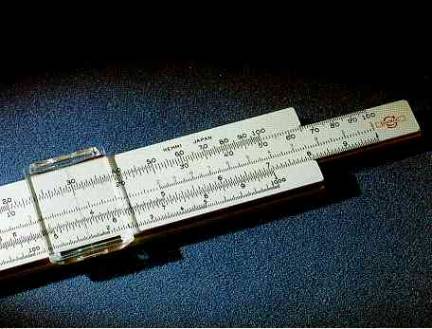There’s no doubt about it. We live in challenging times.
The big word of these day is “disruption.”
As we read every day about how some new shiny toy is the latest radio disruptor.
But is that really what’s happening?
Dematurity
The radio broadcasting industry is also dealing with something bigger; dematurity. “Dematurity is what happens to an established industry when multiple companies adopt a host of small innovations in a relatively short period of time,” says John Sviokla. This term was coined back in the 1980s by Harvard Business School professors William Abernathy and Kim Clark.
Radio’s Dematurity
Think about this phenomenon as it applies to radio.
The internet introduced the concept of streaming radio with two companies introducing nationwide radio coverage from satellites above America. The smartphone provided an opportunity for Pandora to stream to cellphones and podcasters followed. Facebook, Twitter, Instagram, SnapChat and others would compete for a smartphone owner’s attention on these same devices. Meanwhile, on the home front, Amazon developed its Echo voice activated device, as Google, Microsoft, and Apple followed with their own smart speakers.
Each move by these technology companies might have seemed trivial when announced, but when looked at in total, they represent a crescendo of mini-disruptions.
The Currency of People’s Time
While most will focus on the shiny new innovation, what we’re really seeing is how people spend the most valuable currency in their lives, their time.
For radio broadcasters, the challenge is providing people with a listening experience worth their time.
Government Regulations
Another factor that impacts business is government regulations. While radio broadcasting has been heavily regulated since the birth of commercial radio in the 1920s, we compete against online and satellite audio providers that are not regulated.
Government regulations have enormous impact on the type of competition and the intensity it brings in your market.
Death & Taxes
Benjamin Franklin wrote in a 1789 letter that “Our new Constitution is now established, and has an appearance that promises permanency; but in this world nothing can be certain, except death and taxes.” So, in business, you probably can add dematurity as there is not a business that won’t be impacted by it, if it’s not already.
Ask the Right Questions
John Sviokla poses these questions for trying to get a handle on how to build value and sustain value:
- What makes for efficient scale?
- Who is the competition?
- Who are the customers?
- What do the customers want?
- Who owns what?
- Where is the risk?
Sviokla, in his book, The Self-Made Billionaire Effect, says more than 80 percent of the self-made billionaires he’s profiled made their money by reinvigorating a mature industry. “They either introduced a product tuned to new consumer habits, changed the technologies of production, adopted new ideas from another industry, adapted to new regulation, changed the distribution system, or made some combination of those moves,” says Sviokla.
While dematurity is inevitable for all businesses, brainstorming what change is happening, and making changes to take advantage of it, is the difference between crisis and opportunity.
“Change will lead to insight far more often
than insight will lead to change.”
-Milton H. Erickson


 It’s not unusual for little boys and girls to ask the question “Why?” They ask it a lot.
It’s not unusual for little boys and girls to ask the question “Why?” They ask it a lot. I was a physics major in college. The slide rule was a necessary piece of equipment when I was going to school. Hewlett-Packard then came along and replaced it with a line of scientific pocket calculators.
I was a physics major in college. The slide rule was a necessary piece of equipment when I was going to school. Hewlett-Packard then came along and replaced it with a line of scientific pocket calculators. Before I begin with this week’s blog article, I wanted to share with you a milestone this blog reached this past Sunday (5/6/2018) at 11pm EDST. Dick Taylor Blog dot com marked 100,000 visitors to this blog site. DTB premiered on January 4th, 2015 with 75 people stopping by to visit.
Before I begin with this week’s blog article, I wanted to share with you a milestone this blog reached this past Sunday (5/6/2018) at 11pm EDST. Dick Taylor Blog dot com marked 100,000 visitors to this blog site. DTB premiered on January 4th, 2015 with 75 people stopping by to visit. Remember when something special happened in your life, people would say “That’s a Kodak moment?”
Remember when something special happened in your life, people would say “That’s a Kodak moment?” I grew up with TV.
I grew up with TV. P.T. Barnum, among many others, is credited with saying: “
P.T. Barnum, among many others, is credited with saying: “ It mattered little that most of that coverage was negative. What mattered was they spelled “Trump” correctly.
It mattered little that most of that coverage was negative. What mattered was they spelled “Trump” correctly. Radio’s a business. Peter Drucker said “The purpose of a business is to create a customer.” A business also needs to make profit or it won’t be in business for very long. On that we can all agree.
Radio’s a business. Peter Drucker said “The purpose of a business is to create a customer.” A business also needs to make profit or it won’t be in business for very long. On that we can all agree. That was the headline that appeared in the
That was the headline that appeared in the  Lady Macbeth says this line in Act 5, scene 1. The line has made for ironic jokes and marketing schemes. The Bard’s lady, where the blood spot becomes dyed into her conscience and where the king and queen persist in imagining that physical actions can root out psychological demons, Shakespeare’s Macbeth is an exposition of how wrong they are.
Lady Macbeth says this line in Act 5, scene 1. The line has made for ironic jokes and marketing schemes. The Bard’s lady, where the blood spot becomes dyed into her conscience and where the king and queen persist in imagining that physical actions can root out psychological demons, Shakespeare’s Macbeth is an exposition of how wrong they are.